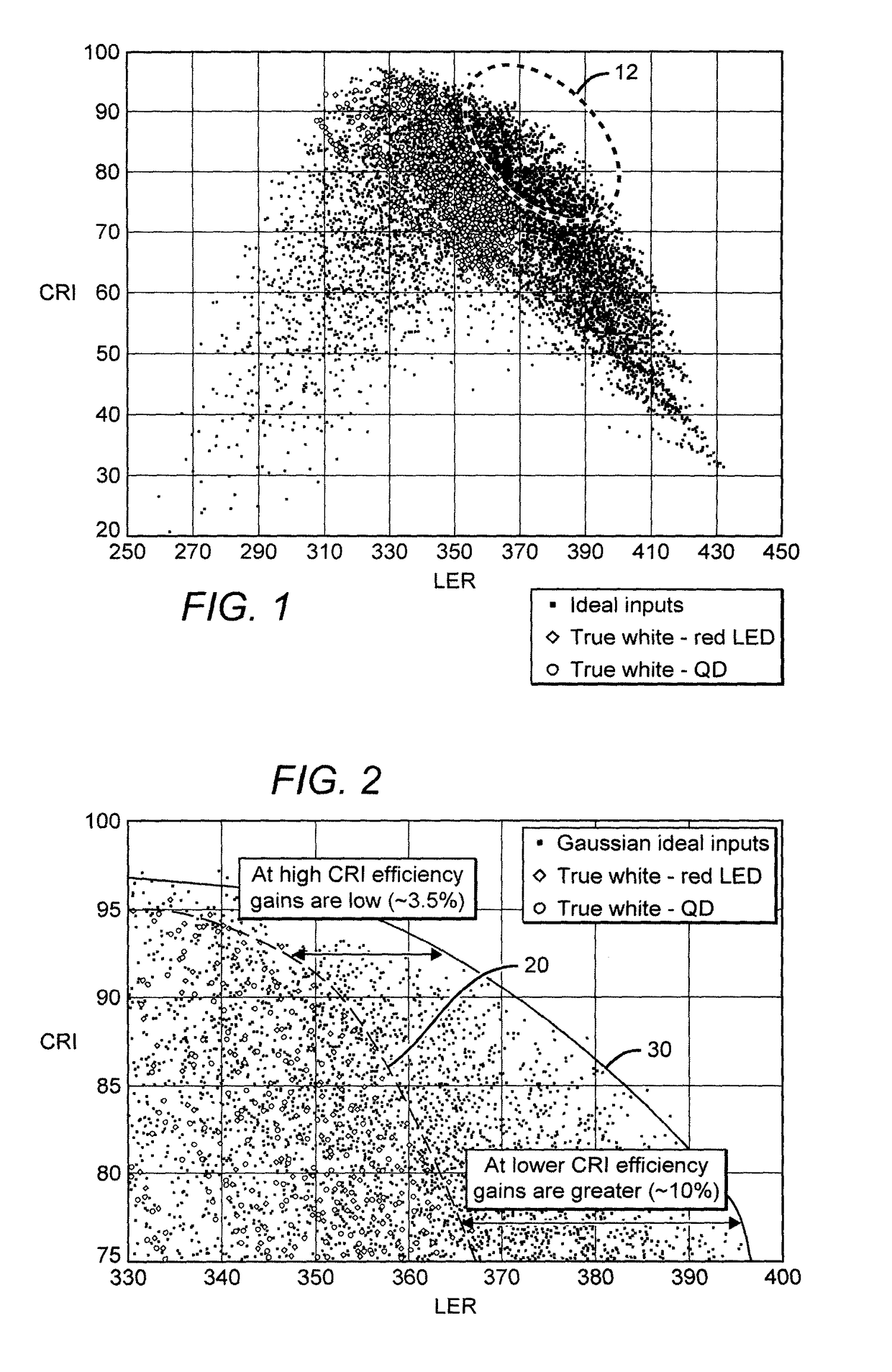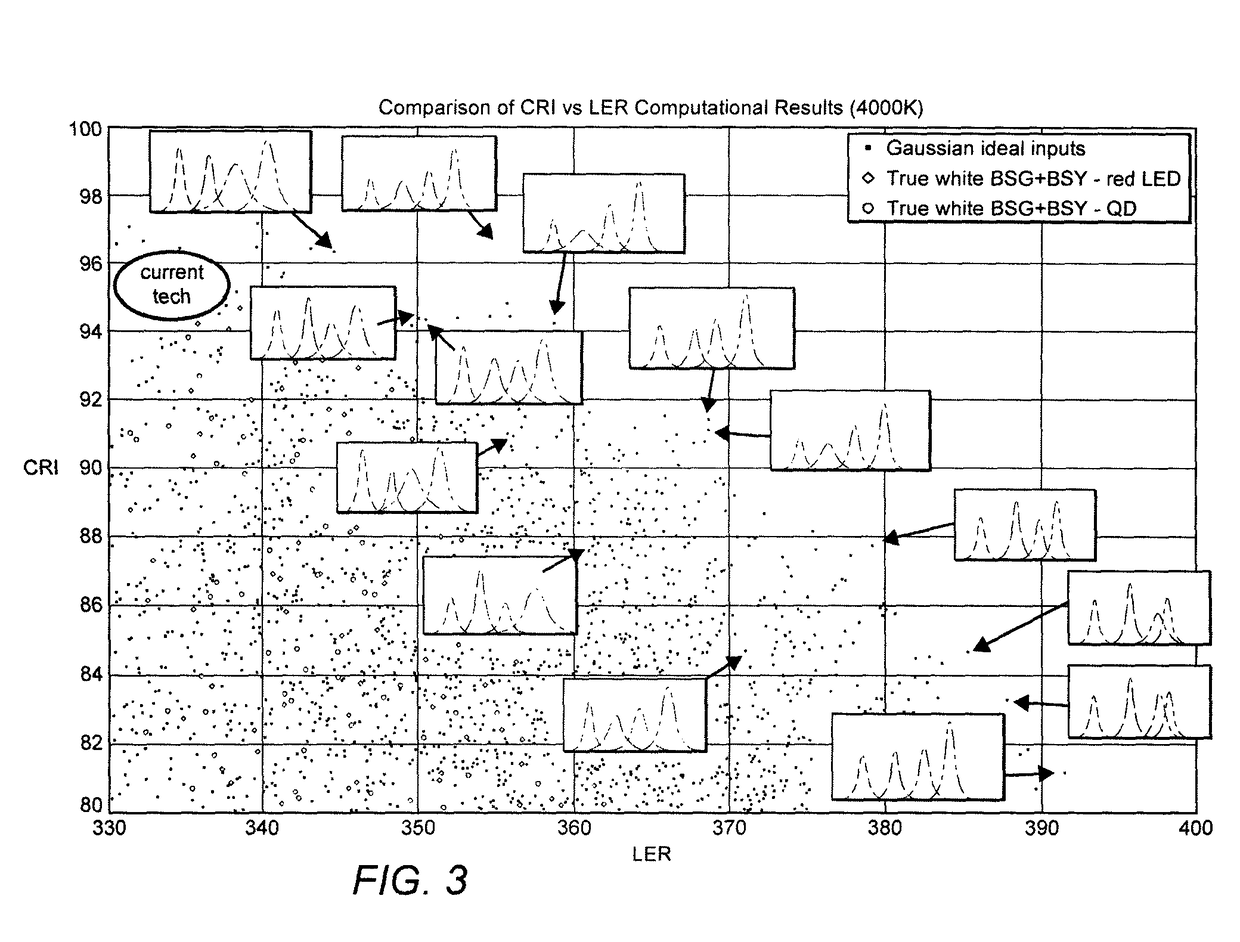Quantum dot narrow-band downconverters for high efficiency LEDs
a narrow-band downconverter and led technology, applied in semiconductor devices, electric lighting sources, electric light sources, etc., can solve the problems of not having a single light-emitting diode junction that can produce white light, poor color reproduction, and color stability, and achieve the effect of improving heat dissipation
- Summary
- Abstract
- Description
- Claims
- Application Information
AI Technical Summary
Benefits of technology
Problems solved by technology
Method used
Image
Examples
Embodiment Construction
[0051]Traditional inorganic phosphor downconverter materials lack in emission spectra flexibility and therefore, limit the maximum efficiency and / or color quality output of the resulting LEDs. Embodiments of the invention described herein use spectral engineering to define a novel set of narrow-band emissions to improve the efficiency and color quality of the resulting white LEDs. The narrow-band emitters comprise nano-sized semi-conductors with a wide range of spectral emissions. Narrow-band emitters may also comprise light emitting diodes. Replacing some or all of the traditional downconverter materials with narrow-band emitters provides for a modular design platform to maximize the efficiency and color quality of white LED devices. The use of additional and multiple wavelength conversion materials are shown and described in U.S. patent application Ser. No. 13 / 292,577, to Gerald H. Negley, entitled “Solid State Lighting Device Including Multiple Wavelength Conversion Materials,” w...
PUM
 Login to View More
Login to View More Abstract
Description
Claims
Application Information
 Login to View More
Login to View More - R&D
- Intellectual Property
- Life Sciences
- Materials
- Tech Scout
- Unparalleled Data Quality
- Higher Quality Content
- 60% Fewer Hallucinations
Browse by: Latest US Patents, China's latest patents, Technical Efficacy Thesaurus, Application Domain, Technology Topic, Popular Technical Reports.
© 2025 PatSnap. All rights reserved.Legal|Privacy policy|Modern Slavery Act Transparency Statement|Sitemap|About US| Contact US: help@patsnap.com



